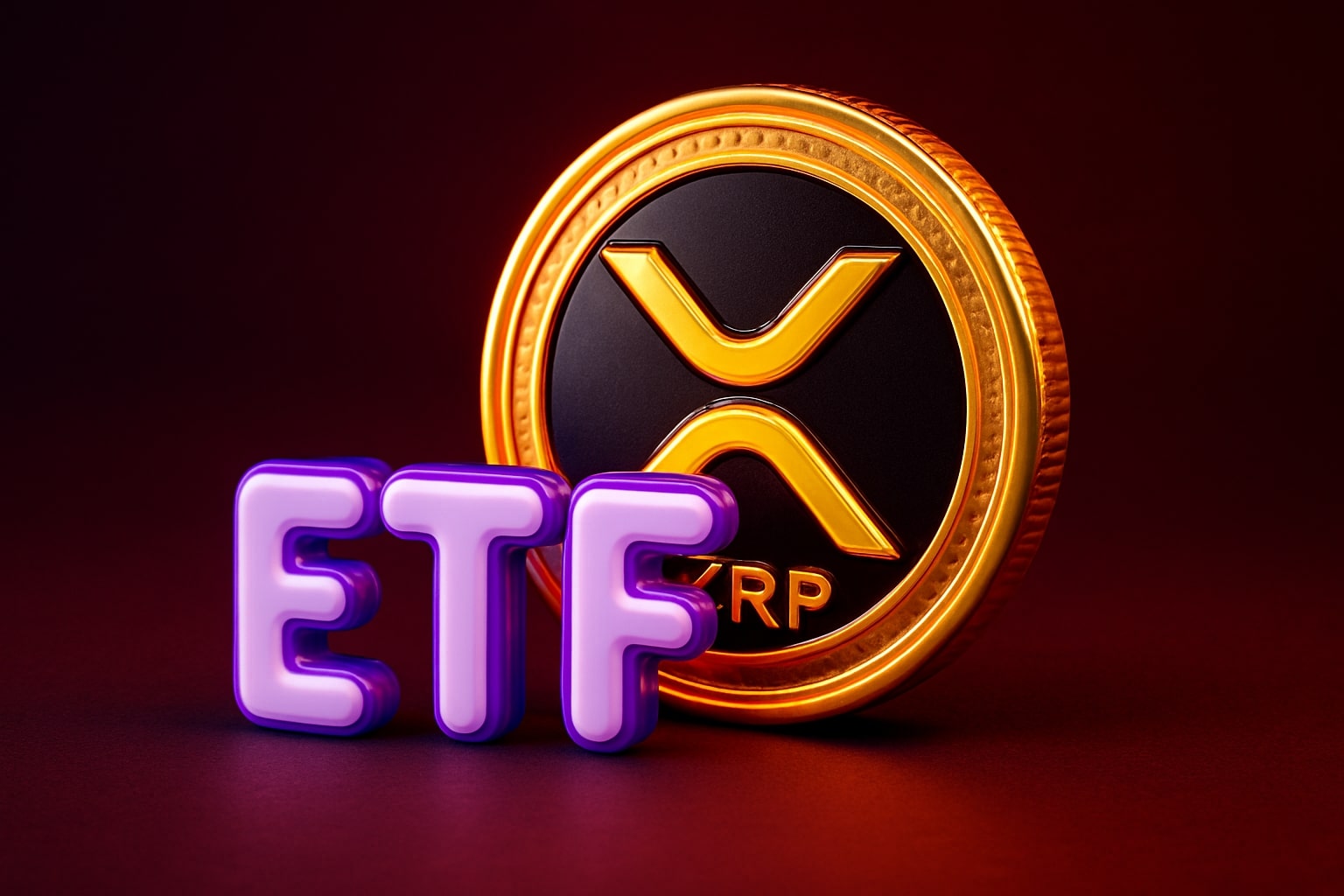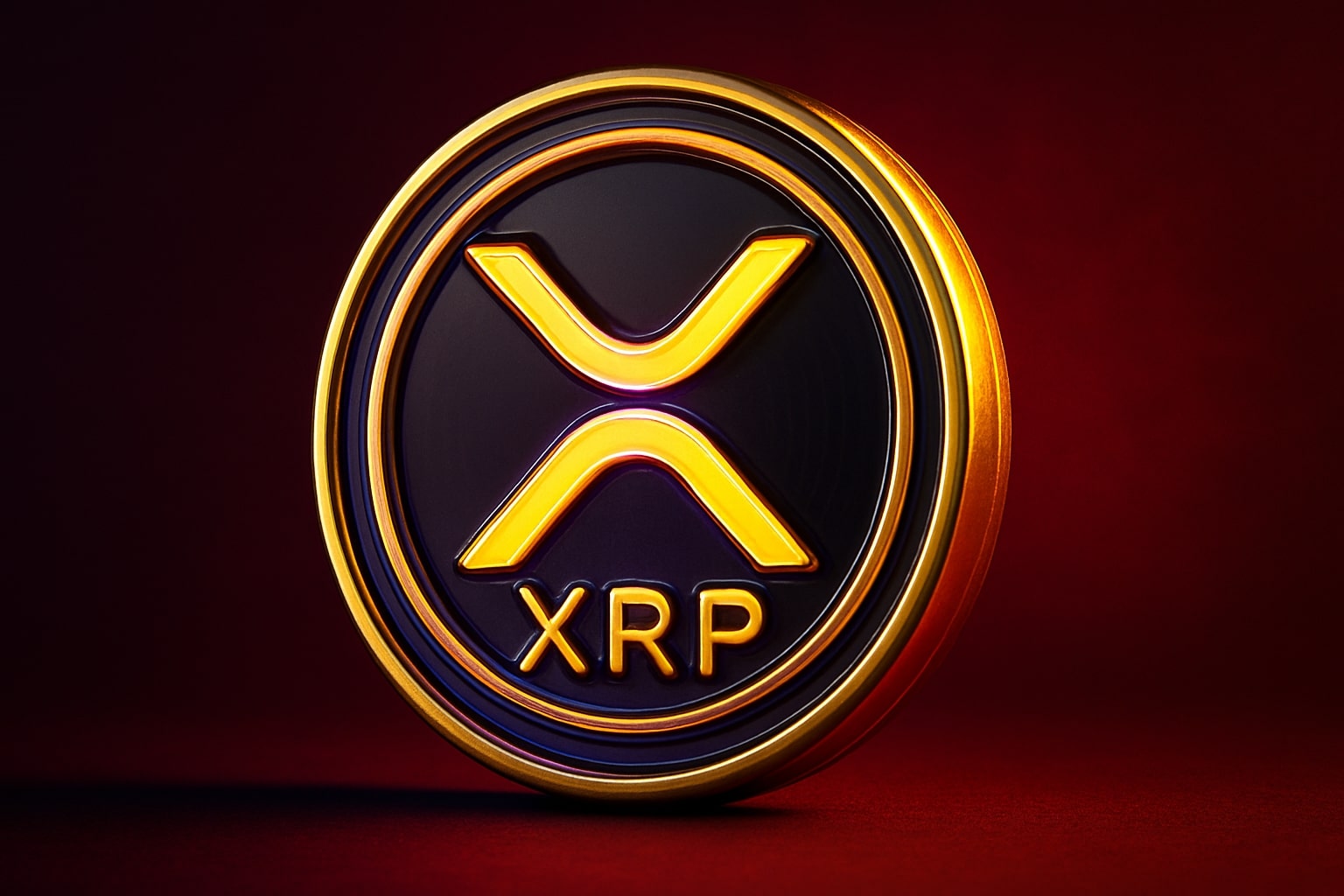
XRP ETFs Defy Crypto Sell-Off With $410M Inflows as XRP Falls to $1.93 Amid Whale Dump
XRPI, XRPR, and XRPC ETFs launched with record institutional inflows but faced immediate selling pressure as whales offloaded 200M XRP | That's TradingNEWS
XRP ETFs Face Volatility as Institutional Demand Clashes With Whale Selling and Market Liquidity Constraints
The Ripple XRP ecosystem entered a defining phase in November 2025, as multiple spot XRP exchange-traded funds (ETFs) — led by XRPI (NASDAQ), XRPR (BATS), and XRPC (Canary Capital) — officially launched in U.S. markets. The combined debut generated significant inflows and attention from institutional investors, yet the underlying XRP (XRP-USD) price failed to hold gains, falling below $2.00 within 48 hours of the first listing despite a total of $250 million in net inflows across the ETF complex. This sharp divergence between ETF enthusiasm and spot market weakness exposed structural fragilities in liquidity, whale concentration, and speculative positioning.
Institutional Inflows Mask Underlying Market Fragility
The Canary Capital XRP ETF (XRPC) recorded one of the strongest ETF launches of the year, attracting $58 million in trading volume and $250 million in inflows on day one. Similarly, the REX Osprey XRP ETF (XRPR) opened at $16.51 before sliding to $15.98 (-3.21%), while XRPI (NASDAQ) dropped from $11.76 to $11.40 (-3.06%), trading between $11.08–$11.72 in regular hours and recovering slightly to $11.53 (+1.14%) after hours.
The surge of institutional buying was facilitated by in-kind creation mechanisms allowing large investors to exchange XRP tokens directly for ETF shares, bypassing traditional cash settlement. While this structure boosted efficiency and minimized slippage, it also obscured the true scale of inflows — as many exchanges occurred off-market. According to on-chain analytics from Glassnode, the ETF rollout coincided with 200 million XRP tokens sold by whale accounts within 48 hours, compounding selling pressure and driving XRP back under the $2 threshold.
Whale Selling Amplifies Liquidity Shock and Supply Imbalance
The sharp decline in XRP’s spot price, which fell from $2.15 to $1.93 (-10.2%) following ETF listings, underscored a mismatch between long-term institutional positioning and short-term speculative behavior. By late November, 41.5% of circulating XRP supply (roughly 26.5 billion tokens) remained at a loss, while only 58.5% of holders were in profit, marking the weakest profitability ratio since mid-2024.
This heavy concentration of supply among large holders continues to constrain XRP’s elasticity. The top 100 whale addresses now control approximately 64% of total circulating supply, making price stability heavily dependent on a few entities’ actions. Analysts noted that while ETF inflows provided a structural bid, the simultaneous whale distribution effectively neutralized institutional momentum in the short term.
ETF Divergence: Institutional Inflows Despite Market Sell-Off
Contrary to broader market weakness, XRP and Solana ETFs remained standout gainers amid heavy Bitcoin and Ethereum ETF outflows. Data from SoSoValue showed combined inflows of nearly $900 million into SOL and XRP ETFs, compared to $866 million in outflows from Bitcoin ETFs during the same week — the second-largest withdrawal streak on record.
Specifically, XRP ETFs alone captured $410 million in cumulative net inflows since their debut, with Bitwise’s XRP ETF leading early accumulation at $105 million on its first day, followed by Canary’s XRPC ETF adding $12.8 million. Despite XRP’s underlying 30-day price decline of 21.2%, ETF investors maintained consistent accumulation, suggesting a growing institutional view of XRP as a medium-term exposure vehicle rather than a short-term trading asset.
Aggressive ETF Accumulation Models Suggest Supply Shock Potential
Market projections by analyst Chad Steingraber outlined two scenarios of ETF-driven XRP absorption. In the base case, 12 spot XRP ETFs acquiring 3 million XRP daily each would collectively absorb 36 million XRP per day, equating to 160 million weekly, 720 million monthly, and 8.64 billion annually.
In a more aggressive model, if each ETF mirrored Bitwise’s 6 million XRP daily acquisition rate, the cumulative total could reach 72 million XRP per day, or 17.28 billion annually — equivalent to nearly one-third of the entire circulating supply. Steingraber warned that such absorption rates could “drain public float entirely unless prices rise astronomically,” underscoring the potential for liquidity compression and volatility spikes as ETF accumulation scales.
XRP Technical Setup: Oversold Conditions and Support at $1.90
After heavy selling pressure, XRP (XRP-USD) reached $1.91 by November 22, marking its most oversold condition since September, with a Relative Strength Index (RSI) of 22.11 and price touching the lower Bollinger Band at $1.89. Technical patterns indicate immediate support in the $1.90–$2.20 range, with a break below likely triggering a retest of $1.61, the 2025 low.
Volume declined by 18% to $6.98 billion, signaling exhaustion of short-term selling momentum. Historically, similar RSI compressions near 20–25 preceded rebounds of 14–18%, implying potential recovery targets between $2.10 and $2.25 if buyers re-enter. Resistance remains at $2.45, coinciding with the 50-day moving average, while any sustained breakout above $2.60 would confirm renewed bullish momentum.
Macro Conditions and ETF Psychology Drive Contradictory Flows
The ETF rally unfolded amid a sharp 30% monthly decline in Bitcoin (BTC-USD) and broader crypto market capitalization drop to $2.9 trillion. Yet, despite this risk-off environment, the XRP and SOL ETF segment has not experienced a single outflow day since launch. This divergence reveals a changing psychology among institutional ETF allocators — who are now diversifying beyond BTC and ETH into altcoins with regulatory clarity and faster transaction frameworks.
Grayscale’s XRP ETF approval on November 22 further solidified institutional legitimacy, but the announcement coincided with a broader market correction, dampening near-term sentiment. Bitcoin’s fall below $88,000 triggered correlation-based sell-offs across altcoins, temporarily muting the positive effects of ETF inflows.
On-Ledger Developments Strengthen Long-Term Fundamentals
Beyond ETF activity, Ripple’s underlying technology continues to mature. The XRP Ledger (XRPL) now supports automated market maker (AMM) integration, tokenized real-world asset issuance, and cross-chain lending connectivity, boosting its long-term institutional use case. Ripple has expanded partnerships to over 300 financial institutions, integrating XRPL payment rails into cross-border settlement operations.
Read More
-
PFFA ETF (NYSEARCA:PFFA) Holds $21.20 as 9.61% Yield Strengthens Its Position as a Top Income ETF
22.11.2025 · TradingNEWS ArchiveStocks
-
Bitcoin ETF Inflows Return With $238M Boost as IBIT Leads $11.5B Record Volume and BTC Reclaims $84K
22.11.2025 · TradingNEWS ArchiveCrypto
-
Natural Gas Price (NG=F) Prices Surge Toward $5.00 as U.S. Cold Snap and Rising LNG Exports Tighten Supply
22.11.2025 · TradingNEWS ArchiveCommodities
-
USD/JPY Price Forecast - Holds 156.38 as BoJ Silence and U.S. Yield Advantage Fuel Renewed Dollar Strength
22.11.2025 · TradingNEWS ArchiveForex
T
he emergence of Digital Asset Treasury (DAT) companies like Evernorth, planning to raise over $1 billion through public listing to hold XRP as a reserve asset, adds another layer of structured demand. These entities are expected to reduce XRP’s liquid supply further as they accumulate for balance-sheet allocation.
Short-Term Risk and Long-Term Opportunity Dynamics
The near-term risk remains tied to whale selling, ETF liquidity rotation, and macro tightening, while the structural opportunity is grounded in institutional adoption, reduced circulating supply, and on-ledger functionality growth. The divergence between ETF inflows and spot outflows suggests XRP may remain volatile until supply dynamics stabilize.
However, the accumulation data and ETF behavior patterns point toward long-term bullish implications once whale distribution wanes. Analysts estimate a potential XRP recovery toward $2.50–$2.80 in Q1 2026 if inflows persist and market liquidity normalizes.
XRP and ETF Performance Metrics
XRPI (NASDAQ): $11.40 (-3.06%) | After Hours: $11.53 (+1.14%)
XRPR (BATS): $15.98 (-3.21%) | Range: $15.62–$16.36
XRPC (Canary Capital ETF): $20.72 (+3.09%) | Debut inflows: $250M | Day-one volume: $58M
XRP (Spot): $1.93 (-0.92%) | Market Cap: $116B | Volume: $6.98B
30-Day XRP Performance: -21.2%
7-Day XRP Performance: -16.6%
Yearly XRP Gain: +49.9%
RSI: 22.11 (Oversold)
ETF Cumulative Inflows: $410M (XRP ETFs), $900M (XRP + SOL combined)
Bitcoin ETF Outflows: $866M (Largest in 2025)
Investment Outlook and Market View
While volatility remains elevated, the combination of ETF absorption potential, on-ledger expansion, and institutional participation positions XRP for an eventual rebound once liquidity stabilizes. The underlying supply compression, projected ETF accumulation of up to 17.28 billion XRP annually, and the consistent lack of ETF outflows indicate that a long-term floor may be forming near the $1.90–$2.00 support range.
If inflows continue and macro pressures ease, the price trajectory could extend toward $2.80–$3.00 in 2026, reflecting renewed institutional conviction. For now, XRP ETFs represent both a structural breakthrough and a test of market resilience — merging deep liquidity demand with the realities of whale-driven volatility.


















